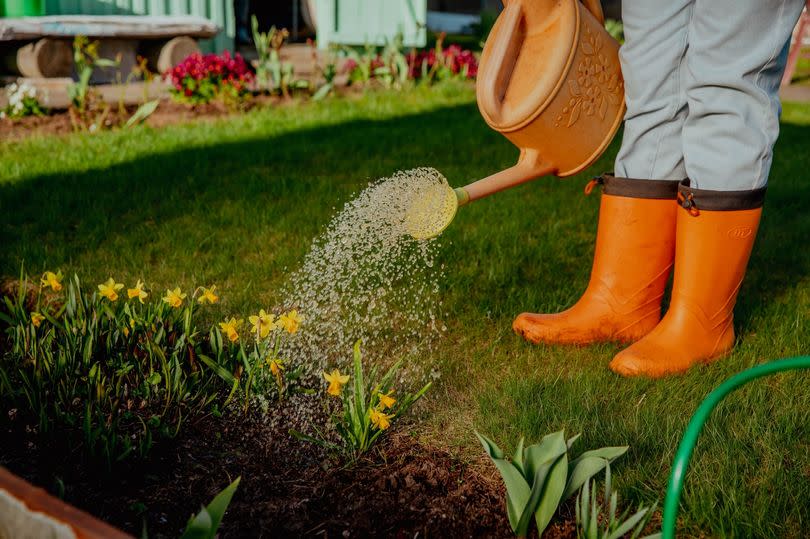Gardening experts warn of summer watering mistake that could kill your plants

As we roll into summer, jobs in the garden are becoming more frequent as our outside spaces burst into bloom - and if we're lucky enough to see the rain hold off, plants will need daily watering to keep them looking their best.
However, you may not be aware that there's right and wrong times to water your garden - and it could make all the difference between a lush look and some parched plants. Experts from the Royal Horticultural Society (RHS) have explained that getting your timings right when it comes to watering your borders, pots and hanging baskets can help to put off pests and fight diseases that can kill your plants.
The experts warned: "Watering in the heat of the day is not a good idea, as much water is lost through evaporation from the surface of the soil and the plants will use water more efficiently if watered in the cooler parts of the day." Instead, the best time to get out with your hose or watering can is early in the morning when the sun comes up, as this is when your plants first start to use water.
If you don't manage to water your garden first thing, waiting until the evening is the next best alternative, as the cooler conditions mean less water is lost to evaporation. However, watering in the morning is preferable as the foliage and soil surface is likely to stay drier for longer, therefore "discouraging slugs, snails and mildew diseases", according to the RHS.
Gardeners' World seconds this advice, explaining that watering during the day means that most of the water will evaporate before reaching the plant roots, meaning it's a waste of time for you as well as being ineffective for your plants. When watering, it's best to apply the water to the base of the plant where it can soak down into the roots - wet or humid leaves can encourage fungal problems as well as increasing the amount of water that evaporates.
As for exactly how often you should be watering your plants, this can vary depending on the type, with the RHS advising: "A container plant in hot sunny weather may need watering daily, whereas a mature shrub might only need a drink in extreme drought." To help, the experts have issued a list of signs that your plant may be in need of a water:
Less than expected growth of foliage, or production of fruit or flowers
Leaves or stems that look dull or lost their shine, sometimes darker or paler than normal
Change in position of leaves, they may angle downwards or start to curl
Wilting (take care though as this can also indicate overwatering!)
Pots become lighter in weight
Pots blowing over in the wind
Symptoms of powdery mildew
The amount of water needed will also depend on which plant you're watering as well as the type of soil it's growing in. Light sandy or chalk soils need watering more frequently than heavy clay soils, although less water can be applied at each watering as the excess will drain away easily, while heavier, clay-based soils can be watered less frequently, but need heavier applications of water because they hold more water within their structure, according to the RHS.
Both the RHS and Gardeners' World advise watering "more thoroughly but less frequently", giving your plants a good soak every two or three days rather than a quick sprinkle each day. However, it doesn't necessarily mean your plant needs water just because the surface of the soil or compost is dry.
As the weather grows hotter, the RHS explained: "It is better to water the garden before drought really sets in, to keep the soil moisture levels even and avoid the soil being continuously dry. But, equally importantly, the soil doesn't have to be really wet all the time because plants roots need air as well as water to grow well."

 Yahoo News
Yahoo News 
